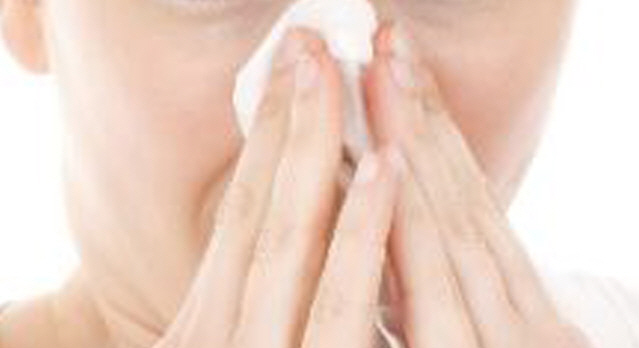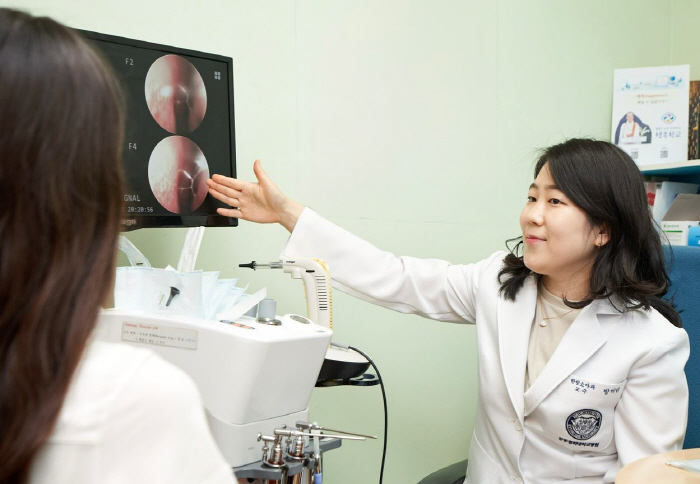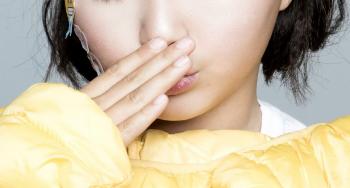My nose is running. Allergic rhinitis, growth disturbance...What about oriental medicine treatment?
|
Child and adolescent rhinitis can affect growth beyond simple discomfort, requiring special attention and treatment. The relationship between allergic rhinitis and childhood growth was summarized with the help of Bang Mi-ran, a professor of oriental medicine pediatrics at Gangdong Kyunghee University Hospital.
◇ Allergic rhinitis easily confused with a simple cold
The typical symptoms of allergic rhinitis are nasal congestion, sneezing, and runny nose. Allergen reactions may be accompanied by itching of the nose, mouth ceiling, neck, eyes, and ears, and in most cases, transparent and clear runny nose continues to flow.
It is easy to confuse because symptoms are similar to colds, but unlike colds, there is little fever or general fatigue. In addition, colds have yellow or thick runny noses, and symptoms usually improve within one to two weeks. However, allergic rhinitis can persist repeatedly for a long period of time as long as exposure to the causative allergen. When rhinitis symptoms begin, the nasal mucosa always becomes swollen, and it can develop into chronic nasal congestion, so early diagnosis and treatment are important.
◇ Oral breathing with nasal congestion affects growth
Chronic nasal congestion leads to the habit of breathing through the mouth in children, that is, 'oral breathing'. Oral breathing increases airway resistance during sleep, preventing deep sleep, and can lead to snoring or arousal during sleep. It also affects growth hormones secreted from deep sleep, which negatively affects the child's height growth.
Professor Bang Mi-ran said, "Elementary school students are actively growing their bones, and a good night's sleep is very important for height growth. Children with rhinitis often show slower growth than children who do not." Some studies have also reported that sleep disorders caused by chronic rhinitis may be an indirect cause of delayed growth.
◇Allergic rhinitis diagnosed from a oriental medical point of view
In oriental medicine, when looking at allergic rhinitis, you don't just look at the nose. Constitution, which is sensitive to external stimuli, deterioration of lung (肺), rain (脾), renal (腎), and immune balance problems are considered together as the cause. Therefore, when treatment is performed, not only symptoms are alleviated, but also the cause of hypersensitivity in the body is found and supplemented to restore the balance of the whole body. Identify whether the cause of hypersensitivity is respiratory or digestive, and conduct customized treatment according to individual constitution. In particular, herbal medicine prescription, acupuncture treatment, and external application use help improve rhinitis symptoms, improve sleep quality, and create a physical environment suitable for growth.
◇prescription of herbal medicine to improve rhinitis symptoms and sleep quality
Beyond improving rhinitis symptoms, herbal medicine that complements and boosts your lungs and spleen can have a positive effect on improving sleep quality and growth indicators. Socheongryongtang improved nasal symptoms and quality of life in patients with chronic rhinitis, and its effectiveness in inhibiting inflammatory cell penetration and regulating immune cell activity was also proven.
Depending on the constitution and symptoms, 補 益 is used to improve chronic fatigue and immune degradation caused by flagging, and 六味 黃湯 is used as a prescription to help balance the body's yin and yang by applying it to children with dry nasal mucosa, sweat when sleeping at night, and fever symptoms. herbal medicine external application ointment, which is applied together with herbal medicine treatment, is also used as an adjuvant therapy for rhinitis treatment. Children with rhinitis are guided to apply herbal medicine external application to the nasal mucosa before going to bed to help keep breathing through the nose smooth during sleep.
◇ Acupuncture treatment that simultaneously controls immunity and restores the growth environment
Acupuncture treatment is also effective not only in relieving symptoms but also in restoring immune balance. Acupuncture treatment helps control the root cause of rhinitis by reducing symptoms such as nasal congestion and sneezing while lowering the levels of inflammation and immune-related substances.
In addition, in pediatric treatment, the stimulation method in the form of an intradermal sticker can be used to receive treatment more comfortably without pain burden. Intussusception is mainly attached to the affected (迎香) blood spot around the nose. If necessary, the needle is applied to other acupuncture points depending on the degree or constitution of the symptoms. Beyond alleviating symptoms, these treatments also help improve children's sleep quality and restore their growth environment.
Professor Bang Mi-ran asked "If we diagnose early and proceed with customized treatment, we can protect the normal growth and development of children."
|
This article was translated by Naver AI translator.





